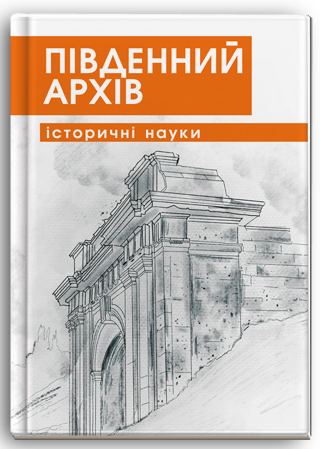UKRAINIAN VILLAGE ON THE EVE OF STALIN’S COLLECTIVISATION: TO THE ALTERNATIVES OF HISTORICAL PROGRESS
DOI:
https://doi.org/10.32999/ksu2786-5118/2023-42-3Keywords:
socialist modernisation, new economic policy, Ukrainian peasantry, collectivisation, alternative, StalinismAbstract
The purpose of the study is to set and clarify the problem of the existence (or non-existence) of an alternative to Joseph Stalin’s ‘socialist restructuring’ of agriculture in the socio-economic state of the pre-collective farming peasantry. Research methods. The research methodology is based on the principles of macro-historical and comparative approaches, combined with the method of alternative histories, which allowed us to identify new aspects of the problem of the Stalinist totalitarian regime’s unprecedented social experiment of restructuring society based on utopian ideas of building communism. The study results show that since the mid-nineteenth century, society has objectively faced the need for modernisation and, accordingly, restructuring of agriculture tradition and the transformation of a peasant into a farmer. Imperial capitalist industrialisation was carried out mainly at the cost of the peasantry and had an unacceptable social and phycological cost for society. The Bolsheviks imposed a utopian communist model of modernisation (in Soviet terminological tradition – socialist industrialisation, collectivisation and cultural revolution) on society, which was not accepted by significant communities, particularly by the peasantry. However, the Bolsheviks did not care. They proceeded from the concept of the «dictatorship of the proletariat», and coercion and terror were organic to them in implementing their policies. The article emphasises that the situation in the countryside was particularly dramatic during the new economic policy period, i. e. on the eve of Soviet modernisation. As a result of the temporary abandonment of the «communist assault» and the introduction of «state capitalism» in the 1920s, the peasantry experienced a kind of renaissance and new prosperity period. The countryside saw a revival of pre-industrial livelihood strategies: the naturalisation of economic life, a focus on consumption, and distancing from the authorities and the Soviet economy. In other words, there was a tendency towards a certain autarky. Accordingly, agricultural production grew exceptionally slowly, and its marketability and consumption of industrial goods declined. The peasantry did not economically and politically support the Bolshevik course of accelerated industrialisation and the Bolshevik version of modernisation in general. Conclusions. It is proved that in the specific historical conditions of Soviet Ukraine in the 1920s, there was no alternative to the new version of the communist modernisation project. It is emphasised that the study of Soviet history in the concept of alternatives has a great perspective, especially with regard to its key moments. This allows for a better understanding of the nature and consequences for post-Soviet countries of the attempt to implement the communist project.
References
Водотыка С.Г. Классовая структура доколхозного крестьянства советской Украины 1920-х годов. Социально-экономическая характеристика : дисс…канд. истор. наук : 07.00.02. Киев, 1983. 212 с.
Всесоюзний перепис людності 1926 р. Т. ХІ. Українська СРР. Підсумки по республіці. Москва : ЦСУ СРСР, 1929. 210 с.
Ганжа О.І. Українське селянство в період становлення тоталітарного режиму (1917–1927). Київ : Інститут історії України НАН України, 2000. 208 с.
Ганжа О.І. Спроби політичного об’єднання селянства України в період непу. Проблеми історії України: Факти, судження, пошуки. Київ, 2003. Вип. 9. С. 214–221.
Історія українського селянства. Нариси в 2-х т. Т. 2. Київ : Наук. думка, 2006. 653 с.
Калініченко В.В. Селянське господарство України в період непу. Історико-економічне дослідження. Харків: Основа, 1997. 400 с.
Колесник В.Ф., Коцур В.П., Коцур Г.Г. Історіографія нової економічної політики в Українській СРР. Київ : Хрещатик, 2002. 175 с.
Кульчицький С.В. Червоний виклик. Історія комунізму в Україні від його народження до загибелі. В 3 кн. Кн. 2. Київ : Темпора, 2013. 628 с.
Маркс К., Енгельс Ф. Маніфест комуністичної партії. Київ : Вперед, 2010. 55 с.
Марочко В.І. Українська селянська кооперація: Історико-теоретичний аспект (1861–1929 рр.). Київ : Інститут історії України НАН України, 1995. 257 с.
Нариси повсякденного життя радянської України в добу непу (1921–1928 рр.) : колективна монографія / Відп. ред. С.В. Кульчицький: В 2 част. Частина 1. Київ : Інститут історії України НАН України, 2009. 445 с.
Нолл В. Трансформація громадянського суспільства: Усна історія української селянської культури 1920-30-х років. Київ : Родовід; Центр дослідження усної історії культури, 1999. 559 с.
Шаповал Л.І. Бухаринська альтернатива нової економічної політики в історико-економічних дослідженнях наприкінці ХХ ст. Вісник Одеського Національного Морського університету. Одеса, 2005. Вип. 26. С. 123–131.
Шаповал Л.І. Вивчення сучасними українськими істориками етапів реалізації непу в аграрному секторі. Український селянин: Збірник наукових праць. Черкаси, 2008. Вип. 11. С. 97–100.



